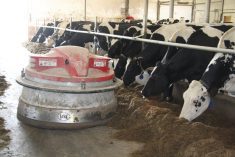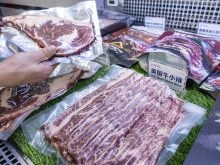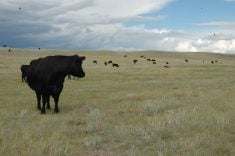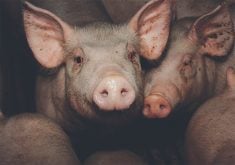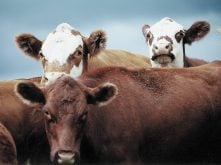A growing number of cattle producers are tapping solar energy to help meet their winter watering needs in Manitoba.
Over the past few years, more producers have sought ways to keep their cattle on pasture longer rather than wintering them in corrals.
To do that, they have needed an affordable way to pump water to cattle at locations where it would be too costly to bring in electricity through power lines.
Grabbing their attention is a system that uses solar panels to capture the sun’s energy for storage in batteries. The energy generated is enough to power a pump that draws water from a well on pasture.
Read Also

New World screwworm not seen as trade threat
Canadian cattle producers shouldn’t be worried about the New World screwworm, which has become a massive concern for ranchers in Mexico and is threatening the southern United States
“Three or four years ago, these were not that common, but there are lots of them around now,” said Larry Fischer, a Manitoba Agriculture livestock and forage technician at Gladstone, Man.
“It’s really coming to light the past few years because producers are wanting to cut their costs.”
By keeping cattle on pasture for at least part of the winter, producers can trim their feed costs.
They accomplish that by setting pasture aside or growing crops that can be swathed or left standing for cattle to graze in the winter.
The strategy removes the need to bale and haul feed to a winter storage site.
It also trims the cost of removing manure from corrals where cattle have been wintered.
A common option when using solar panels and a battery to power a water pump is to build a small shelter over the water well.
A culvert serves as cribbing and the pump is often housed inside that.
Heat from the ground within the well tends to be enough to keep the pump and water lines from freezing, said Fischer.
Some producers install a small propane heater inside the shed as an added precaution against freezing.
Some systems have most of the watering trough inside the shed and only about 10 percent outside for the cattle to drink from.
Producers can also house the entire trough inside the shed and create an opening for the cattle to put their heads through for drinking.
Fischer had three main recommendations for producers thinking about using solar panels to capture energy to power a water pump on pasture:
- Have enough cattle on pasture so the water trough is visited often. This helps prevent freezing.
- Check daily to make sure the pump and other equipment are working. “If it freezes up, especially in this weather, you can have
quite a problem.” - Find a reputable dealer who can fit the system to the farm’s needs. “Don’t just go out and set this thing up on your own because you’ll run into lots of problems,” Fischer said.
The costs can easily climb into thousands of dollars by the time everything is purchased and installed.
One way to get more benefit from that expense is to also use the solar panels, battery and pump to draw water for cattle during the summer months, which may include moving the equipment to other locations, such as a pasture with a dugout.
This is the fifth winter Hugh Blair and his family at Gladstone, Man., have benefitted from using solar panels to power a water pump on pasture.
They rely most heavily on that system earlier in the winter when there is not as much snow for the cattle to lick up to meet their water needs. Using a combination of swath and bale grazing, the Blairs are able to keep their cattle on pasture even during the coldest winter months.
Blair said their watering system includes a well that is about eight metres deep and surrounded with cribbing. A floating pump, powered by energy drawn from solar panels, is mounted inside the well.
An insulated shed houses the well and most of the water trough. Ice forms on the water in the trough only on extremely cold days.
“It actually works really good.”
Compared to the costs of running in a power line to the winter watering site, Blair considers the solar-powered system reasonable.
He also uses solar power to pump water from dugouts for his cattle in summer.
He noted that it is wise in a month like December to have an extra set of batteries charged as a backup in case overcast weather combined with fewer daylight hours reduce the amount of solar energy that can be generated.
Blair and his family were honoured with the grazier of the year award during the Manitoba Grazing School in Brandon last month.



